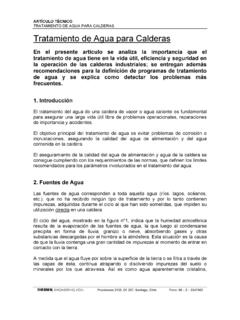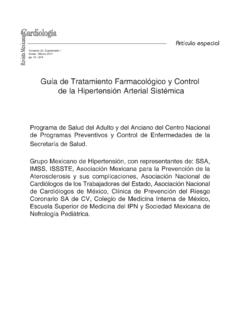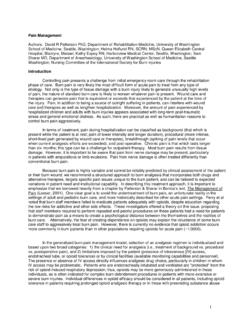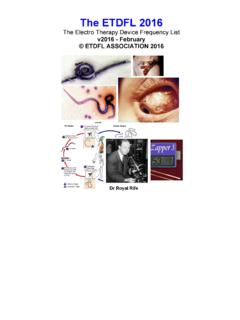Transcription of Sexually Transmitted Diseases Treatment …
1 Department of health and human servicesCenters for disease Control and PreventionRecommendations and Reports December 17, 2010 / Vol. 59 / No. RR-12 Morbidity and Mortality Weekly Transmitted Diseases Treatment guidelines , 2010 MMWR The MMWR series of publications is published by the Office of Surveillance, Epidemiology, and Laboratory Services, Centers for disease Control and Prevention (CDC), Department of Health and Human Services, Atlanta, GA Citation: Centers for disease Control and Prevention. [Title]. MMWR 2010 ;59(No. RR-#):[inclusive page numbers].Centers for disease Control and PreventionThomas R.
2 Frieden, MD, MPHD irectorHarold W. Jaffe, MD, MAAssociate Director for ScienceJames W. Stephens, PhDOffice of the Associate Director for ScienceStephen B. Thacker, MD, MScDeputy Director for Surveillance, Epidemiology, and Laboratory ServicesStephanie Zaza, MD, MPHD irector, Epidemiology and Analysis Program OfficeEditorial and Production StaffRonald L. Moolenaar, MD, MPHE ditor, MMWR SeriesChristine G. Casey, MDDeputy Editor, MMWR SeriesTeresa F. RutledgeManaging Editor, MMWR SeriesDavid C. JohnsonLead Technical Writer-EditorRachel J. WilsonProject EditorMartha F. BoydLead Visual Information SpecialistMalbea A. LaPeteStephen R.
3 SpriggsTerraye M. StarrVisual Information SpecialistsQuang M. Doan, MBAP hyllis H. KingInformation Technology SpecialistsEditorial BoardWilliam L. Roper, MD, MPH, Chapel Hill, NC, ChairmanVirginia A. Caine, MD, Indianapolis, INJonathan E. Fielding, MD, MPH, MBA, Los Angeles, CADavid W. Fleming, MD, Seattle, WAWilliam E. Halperin, MD, DrPH, MPH, Newark, NJKing K. Holmes, MD, PhD, Seattle, WADeborah Holtzman, PhD, Atlanta, GAJohn K. Iglehart, Bethesda, MDDennis G. Maki, MD, Madison, WIPatricia Quinlisk, MD, MPH, Des Moines, IAPatrick L. Remington, MD, MPH, Madison, WIBarbara K. Rimer, DrPH, Chapel Hill, NCJohn V. Rullan, MD, MPH, San Juan, PRWilliam Schaffner, MD, Nashville, TNAnne Schuchat, MD, Atlanta, GADixie E.
4 Snider, MD, MPH, Atlanta, GAJohn W. Ward, MD, Atlanta, GAConTEnTSIntroduction ..1 Methods ..1 Clinical Prevention Guidance ..2 STD/HIV Prevention Counseling ..2 Prevention Methods ..4 Partner Management ..7 Reporting and Confidentiality ..8 Special Populations ..8 Pregnant Women ..8 Adolescents ..10 Children ..11 Persons in Correctional Facilities ..11 Men Who Have Sex with Men ..12 Women Who Have Sex with Women ..13 HIV Infection: Detection, Counseling, and Referral ..14 Diseases Characterized by Genital, Anal, or Perianal Ulcers .. HSV Infections ..20 Granuloma Inguinale (Donovanosis) ..25 Lymphogranuloma Venereum.
5 26 Syphilis ..26 Congenital Syphilis ..36 Management of Persons Who Have a History of Penicillin Allergy .39 Diseases Characterized by Urethritis and Cervicitis ..40 Urethritis ..40 Nongonococcal Urethritis ..41 Cervicitis ..43 Chlamydial Infections ..44 Gonococcal Infections ..49 Diseases Characterized by Vaginal Discharge ..56 Bacterial Vaginosis ..56 Trichomoniasis ..58 Vulvovaginal Candidiasis ..61 Pelvic Inflammatory disease ..63 Epididymitis ..67 Human Papillomavirus (HPV) Infection ..69 Genital Warts ..70 Cervical Cancer Screening for Women Who Attend STD Clinics or Have a History of STDs ..74 Vaccine-Preventable STDs.
6 78 Hepatitis A ..78 Hepatitis B ..80 Hepatitis C ..85 Proctitis, Proctocolitis, and Enteritis ..87 Ectoparasitic Infections ..88 Pediculosis Pubis ..88 Scabies ..89 Sexual Assault and STDs ..90 References ..96 Terms and Abbreviations Used in This Report ..109 Vol. 59 / RR-12 Recommendations and Reports 1 Sexually Transmitted Diseases Treatment guidelines , 2010 Prepared byKimberly A. Workowski, MD1,2 Stuart Berman, MD11 Division of STD PreventionNational Center for HIV/AIDS, Viral Hepatitis, STD, and TB Prevention2 Emory University, Atlanta, GeorgiaSummaryThese guidelines for the Treatment of persons who have or are at risk for Sexually Transmitted Diseases (STDs) were updated by CDC after consultation with a group of professionals knowledgeable in the field of STDs who met in Atlanta on April 18 30, 2009.
7 The information in this report updates the 2006 guidelines for Treatment of Sexually Transmitted Diseases (MMWR 2006;55[No. RR 11]). Included in these updated guidelines is new information regarding 1) the expanded diagnostic evaluation for cervicitis and trichomoniasis; 2) new Treatment recommendations for bacterial vaginosis and genital warts; 3) the clinical efficacy of azithromycin for chlamydial infections in pregnancy; 4) the role of Mycoplasma genitalium and trichomoniasis in urethritis/cervicitis and Treatment -related implications; 5) lymphogranuloma venereum proctocolitis among men who have sex with men; 6) the criteria for spinal fluid examination to evaluate for neurosyphilis.
8 7) the emergence of azithromycin-resistant Treponema pallidum; 8) the increasing prevalence of antimicrobial-resistant Neisseria gonorrhoeae; 9) the sexual transmission of hepatitis C; 10) diagnostic evaluation after sexual assault; and 11) STD prevention term Sexually Transmitted Diseases (STDs) is used to refer to a variety of clinical syndromes caused by pathogens that can be acquired and Transmitted through sexual activity. Physicians and other health-care providers play a critical role in preventing and treating STDs. These guidelines for the treat-ment of STDs are intended to assist with that effort. Although these guidelines emphasize Treatment , prevention strategies and diagnostic recommendations also are recommendations should be regarded as a source of clinical guidance and not prescriptive standards; health-care providers should always consider the clinical circumstances of each person in the context of local disease prevalence.
9 They are applicable to various patient-care settings, including family-planning clinics, private physicians offices, managed care orga-nizations, and other primary-care facilities. These guidelines focus on the Treatment and counseling of individual patients and do not address other community services and interven-tions that are essential to STD/human immunodeficiency virus (HIV) prevention guidelines were developed using a multistage process. Beginning in 2008, CDC staff members and public and private sector experts knowledgeable in the field of STDs systematically reviewed literature using an evidence-based approach ( , published abstracts and peer-reviewed journal articles), focusing on the common STDs and information that had become available since publication of the 2006 guidelines for Treatment of Sexually Transmitted Diseases (1).
10 CDC staff members and STD experts developed background papers and tables of evidence that summarized the type of study ( , randomized controlled trial or case series), study population and setting, treatments or other interventions, outcome measures assessed, reported findings, and weaknesses and biases in study design and analysis. CDC staff then developed a draft document on the basis of this evidence-based review. In April 2009, this information was presented at a meeting of invited consultants (including public- and private-sector professionals knowledgeable in the Treatment of patients with STDs), where all evidence from the literature reviews pertaining to STD management was discussed.


















